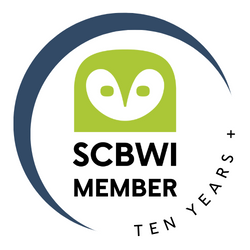I chose today’s Perfect Picture Book in honor of two women: my mother-in-law and my eldest child.
A nature-loving virologist in an era of few female scientists, my mother-in-law would have turned 100 today. Tragically, she died when our first child was an infant. All of her grandchildren know only “of her.” While none has become a scientist, all have inherited her strong spirit, they are “interested and interesting”, and all love nature.
We moved to England when our elder daughter was entering second grade. She did well in school for the first few years, but struggled in Mathematics during fifth grade. Even though we had practiced the multiplication tables every morning while driving to school, she just didn’t seem to “get it” and started falling behind as algebra loomed. Working with her teacher, we discovered the reason: an important building block to understanding multiplication – sets, was taught in first grade in England and in second in our daughter’s US school. She missed that unit! We quickly remedied the problem using her baby brother’s Duplos, and thankfully, she mastered the concept and caught up to her class. I wish today’s Perfect Picture Book, What in the World? Numbers in Nature, had existed then.
 Title: What in the World? Numbers in Nature
Title: What in the World? Numbers in Nature
Written By: Nancy Raines Day
Illustrated By: Kurt Cyrus
Publisher/date: Beach Lane Books, 2015
Suitable for Ages: 4-8
Themes/Topics: Nature, counting, sets.
Opening: “What in the world comes one by one? A nose. A mouth. The moon. The sun.”
Brief Synopsis: This rhyming counting book invites nature exploration, from the single nose, mouth, moon and sun to the “vast amount” of stars in the sky.
Links to Resources:
- In an author’s note, Nancy Raines Day explains the concept of numerical sets as groups of “similar things that occur together” and invites readers and listeners to “look for a numerical set in the world around you.”
- Think of other types of sets and go on a scavenger hunt around the house or garden. Look for objects of a certain color, shape, size or even utility (e.g., things we use to cook or to create art).
- Build sets with Legos, empty boxes or even pantry items.
Why I Like this Book: With the repeated question of “what in the world…”, Nancy Raines Day invites readers and listeners to see and savour nature, to bring order to our chaotic world. This book is a wonderful introduction to the important scientific habit of observation and to the mathematics concept of sets, the precursor to understanding multiplication. The colourful illustrations include other examples of sets that readers and listeners can find together. And spoiler alert: if you are wondering “what in the world” of nature has nine, in an endnote, Ms. Day confesses it took her two years to find the perfect example – the Stickleback Fish. Fun to say & well worth a Google!
This Perfect Picture Book entry is being added to Susanna Hill’s Perfect Picture Books list. Check out the other great picture books featured there!







I enjoyed the story you shared with us of the problems your daughter encountered in math and how that relates to your PPBF selection.This is a book I’m looking for at my library today. I love the author’s use of thoughtful rhymes. The example you gave was both lovely to read and say aloud.
I like the concept and the pretty cover!